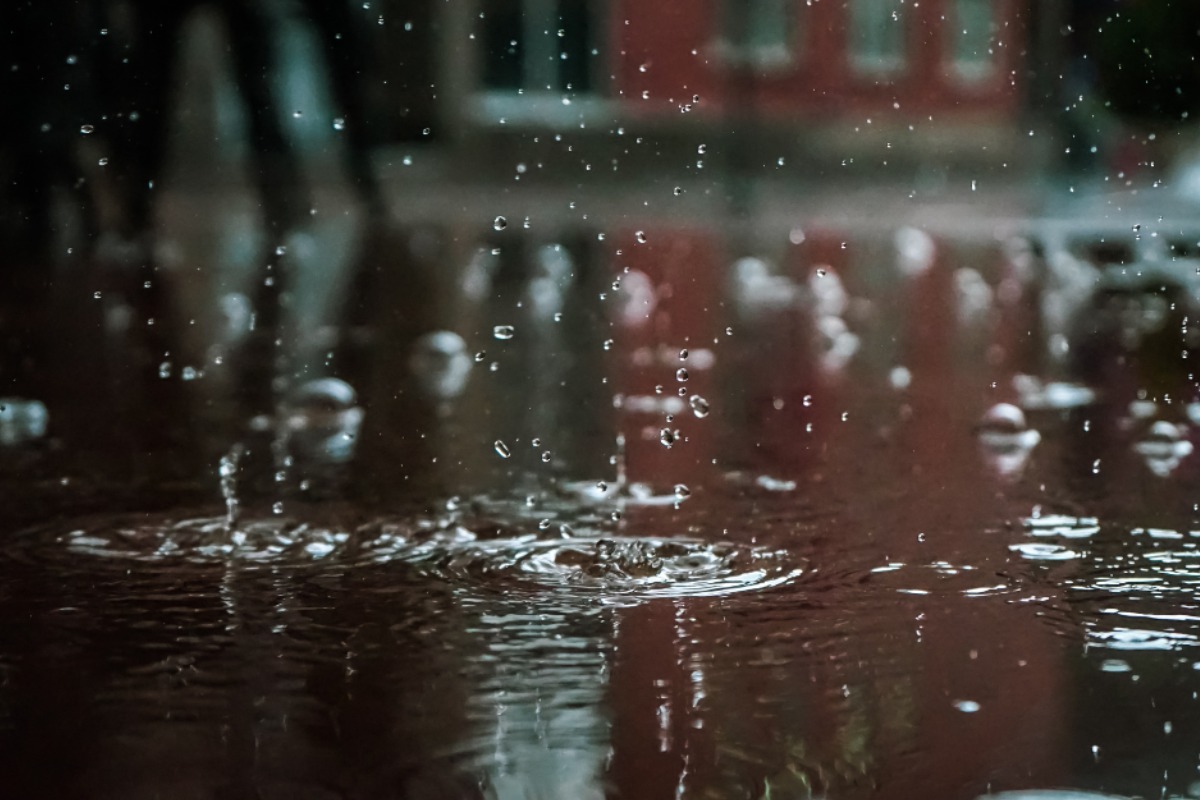The National Centre of Meteorology (NCM) predicts rainy and erratic weather in the United Arab Emirates this week. But could this be the last bit of winter before the summer heat arrives, given the rising temperatures and the likelihood of rainy weather in many places?
Rainfall Predictions for the UAE What Impact Will This Have on Schools?
Rainfall is anticipated from February 16–18, 2025, when a surface low-pressure system meets an upper-air weak low-pressure system, according to the NCM. Particularly in the coastal, northern, and eastern regions, this combination will bring cloudy skies, sultry nights, and sporadic rain showers.
The NCM’s prediction for today is:
- overcast to partly overcast sky with a chance of rain, particularly in the north and along the coast.
- warmer days due to a little increase in temperature.
- In open spaces, light to moderate winds can blow dust and occasionally freshen the air.
- The Oman Sea and the Arabian Gulf have rough to moderate sea conditions.
How Much Time Will It Rain?
Monday, February 17 and Tuesday, February 18 – Rainfall is forecast in areas of the UAE. With milder nights and the potential for fog formation on Tuesday morning, the unsteady conditions will persist.
February 19, Wednesday With the NCM predicting partly cloudy conditions and a drop in temperature, the weather is expected to clear up.
What Effect Does This Have on Schools?
The KHDA and the UAE Ministry of Education have not yet formally announced any closures of schools. But in past years, flooding caused by severe rain has forced last-minute closures of several school facilities. Depending on safety concerns and traffic conditions, schools may make their own decisions.
Even if there won’t be much rain, parents should follow the official school channels in case there are any last-minute changes. Additionally, fog and mist may impair morning vision, making the school run more difficult.
Is winter in the United Arab Emirates already over?
On February 10, the United Arab Emirates exited the last stage of winter, according to Ibrahim Al-Jarwan, Chairman of the Emirates Astronomy Society. This time of transition, which ends on March 20, is distinguished by:
- gradual rise in temperature (highs of 27–33°C this week are anticipated).
- more frequent downpours.
- the change from colder evenings to warmer days.
Residents of the UAE may notice that warmer days are coming sooner than normal as a result of the temperature progressively rising. However, until mid-March, there will be sporadic showers and cool breezes.
The complete weather forecast for the United Arab Emirates for Monday,
February 17, 2025
Partly overcast to cloudy with a chance of rain in some places, particularly in the north, east, and coastal regions, with another temperature rise. Some internal parts are humid at night and on Tuesday morning. Blowing dust is caused by light to moderate breezes and occasionally fresh air. In the Oman Sea and the Arabian Gulf, the sea will be rough to moderate.
February 18, 2025, Tuesday
Over some coastal, northern, and western regions, there is a chance of light showers along with partly overcast and cloudy conditions at times. There is a chance of fog or mist formation in some internal areas due to the humidity during the night and Wednesday morning. Light to moderate northeasterly to northwesterly winds, which can occasionally be fresh over the sea, can reach speeds of 10 to 25 kilometers per hour, up to 40 kilometers per hour. The Oman Sea will have mild to moderate waves, while the Arabian Gulf will have moderate to strong waves.
Wednesday, February 19, 2025, Wednesday
With a drop in temperature, it will be fair to partly overcast and cloudy at times. Over certain interior and coastal locations, it will be humid at night and Thursday morning, with a chance of fog or mist formation. Occasionally freshening, light to moderate northwesterly to northeasterly winds can reach speeds of 10 to 25 kilometers per hour, up to 35 kilometers per hour. In the Arabian Gulf, the sea will be turbulent until the afternoon, while in the Oman Sea, it will be moderate to slight.
Thursday, February 20, 2025, Thursday
Cloudy at times and fair to partly cloudy overall. Over certain internal and coastal regions, it was humid at night and on Friday morning. Winds from the northeast to the southeast are light to moderate, reaching speeds of 10 to 20 kilometers per hour. In the Oman Sea and the Arabian Gulf, the sea will be shallow.
Friday, February 21, 2025, Friday
Fair to partly overcast and cloudy at times over certain coastal and Northern areas by morning. Humid by night and Saturday morning over some coastal and internal locations with a potential of mist formation. Winds from the northeast to the southeast are light to moderate, reaching speeds of 10 to 20 kilometers per hour. In the Oman waters and the Arabian Gulf, the waters will be shallow.
To find out if your child’s school may be impacted, keep an eye on weather updates and the channels of communication provided by your school. Meanwhile, drive carefully and according to the National Centre of Meteorology’s (NCM) recommendations in the United Arab Emirates.
Things to Do Before Floods, Thunderbolts, and Heavy Rain
Please complete the following steps:
- Observe how the weather changes, If there are any notices or warnings, pay attention to the official media and weather forecasts.
- Maintain electrical wirings on a regular basis and make sure they are fixed firmly.
- Examine the springs and water sewerage channels, and do any necessary maintenance.
- In addition to having emergency supplies and first aid kits available, make sure you have candles, lanterns, and hand flashlights on hand in case you need them.
- Don’t let kids play in open spaces outside.
- Close windows, secure external items, and store valuables in waterproof containers.
What to Do in the Event of Thunderbolts, Floods, and Heavy Rain
Please complete the following steps if you are inside your house:
- Observe how the weather changes, Pay attention to official media, social media websites, and weather forecasts.
- Examine springs and water sewage channels to prevent as much water buildup as you can.
- In the event that lightning strikes the home network, turn off the power to all devices to safeguard them from electrical currents.
- Avoid touching metals, electrical equipment and phones, do not use water taps or any water related to the plumbing system, since thunder could damage the wires and pipes.
- Except in the most dire circumstances, never leave the house.
- Avoid going near glass doors and windows.
- Children should not be permitted to play outside the house.
- In the event that the media or state security officials issue an evacuation order, follow instructions and guidelines right once to protect your family’s safety.
- In the event of a hurricane, cut off the water supply and disconnect the electricity.
- Avoid taking as many showers as you can since lightning strikes the plumbing connections in the toilet and could create electrical charges.
- Both landlines and cell phones are safe to use indoors, so feel free to use them if you like.
Please follow these procedures if you are outside:
- Steer clear of standing beneath tall, lone trees, electrical poles, and telephone poles.
- Avoid trying to stroll next to dams, ponds, valley ducts, shorelines, or rushing water.
- When it’s raining a lot, try to find a safe spot and avoid areas with electricity; just because it’s turned off doesn’t mean it’s safe.
- Avoid valley ducts and running water, especially if you were swimming in the ocean.
- Because lightning can start fires, make sure you have enough firefighting supplies and equipments on hand.
- Steer clear of cell phones unless absolutely necessary, especially during thunderstorms.
- In an emergency, use a landline if you’re in an open area. Keep in mind that landlines and cell phones are only safe to use indoors; they shouldn’t be used outside.
- Do not attempt to reconnect the electricity in case of disconnection and seek support from responsible authorities instead.
- Do not leave the house before verifying the situation is back to normal and check weather forecasts through local media.
- In the event that the state’s appropriate authorities issue an evacuation order, follow the instructions right away to protect your family’s safety.
Please follow these steps when operating a vehicle:
- Keep an eye on weather variations and tune in to radio weather forecasts.
- Please exercise caution and care amid weather changes occurring suddenly on the road.
- Avoid driving in flooded areas as the water may cause you to lose control of your vehicle.
- Maintain safe spacing between vehicles.
- To keep your vision clear, use the front and rear wipers and only use the flashing indicators as a warning.
- Park the car off the road in case you had to stop it fully, and call your family to alert them you are safe.
- Driving in flooded areas should be done carefully as it might lead to slippage and losing control of the vehicle.
- In the event of an electrical current disconnecting during periods of intense precipitation, avoid crossing flowing water that is higher than knee level.









